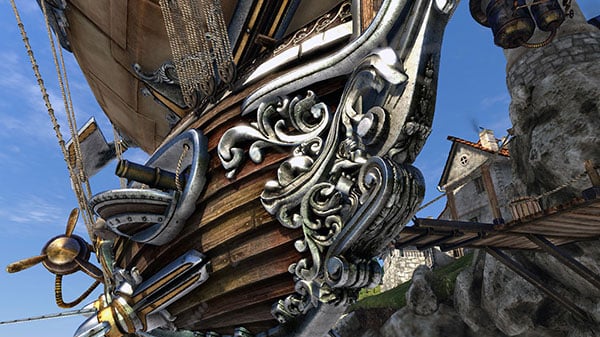Test System and Unigine Heaven v4.0
How We Configured Our Test Systems: We tested the graphics cards in this article on an EVGA X79 Dark motherboard powered by an Intel Core i7-4960X six-core processor and 16GB of Corsair DDR3-1866 RAM. The first thing we did when configuring the test system was enter the system UEFI and set all values to their "high performance" default settings and disable any integrated peripherals that wouldn't be put to use. The memory's X.M.P. profile was enabled to ensure better-than-stock performance and the solid state drive was then formatted and Windows 8.1 Professional x64 was installed. When the installation was complete, we fully updated the OS and installed the latest DirectX redist along with all of the drivers, games, and benchmark tools necessary to complete our tests.
|
| Hardware Used: Intel Core i7-4960X (3.3GHz, Six-Core) EVGA X79 Dark (Intel X79 Express) Radeon R9 Fury X Radeon R9 390 Radeon R9 290X Radeon R7 295X2 GeForce GTX 980 GeForce GTX Titan GeForce GTX Titan X GeForce GTX 980 Ti 16GB Corsair DDR3-1866 OCZ Vertex 3 Integrated Audio Integrated Network | Relevant Software: Windows 8.1 Pro x64 DirectX Redist AMD Catalyst v15.15 Beta NVIDIA GeForce Drivers v352.90 / v353.30 Benchmarks Used: Unigine Heaven v4 3DMark "Fire Strike" Bioshock Infinite Hitman: Absolution Metro Last Light Sleeping Dogs Crysis 3 FRAPS |
|
|
Unigine's Heaven Benchmark v4.0 is built around the Unigine game engine. Unigine is a cross-platform, real-time 3D engine, with support for DirectX 9, DirectX 10, DirectX 11 and OpenGL. The Heaven benchmark--when run in DX11 mode--also makes comprehensive use of tessellation technology and advanced SSAO (screen-space ambient occlusion). It also features volumetric cumulonimbus clouds generated by a physically accurate algorithm and a dynamic sky with light scattering.



GeForce GTX 980 Ti Frame Time Data

Radeon R9 Fury X Frame Time Data
Though overall performance was roughly in-line with the GeForce GTX 980 Ti, the Fury X showed significantly more variances in frame latency. Notice how consistent the 980 Ti is versus the Fury X.







